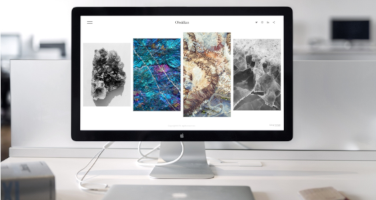Website content personalization is a powerful tool – it’s a way for marketers to speak more directly to their customers, can increase engagement, and can even help build trust.
However, if you assumed website content personalization was only a tool for the B2C crowd, that’s where you’d be mistaken. Content personalization can also be an equally powerful tool for those in the B2B space! In fact, according to a 2018 study, 80% of companies surveyed reported seeing a lift in conversion after customizing.
That’s why we’re going to break down what we mean by website content personalization and how you might be able to use it in your own campaigns. Stay tuned to learn how to use web content personalization to reach your B2B audience.
What is content personalization?
Content personalization is the process of tailoring the marketing content you produce to reach a specific segment of your target audience. Instead of focusing on broad, general concepts that might bring in a lot of eyes, but not necessarily a lot of buys, the content is created more thoughtfully and specifically.
To give a few content personalization examples, a business might create a video or article designed to appeal specifically to millennial dog owners, or (for a B2B example) to small to mid-size manufacturers in the Midwest. The goal of website content personalization is to think critically about the segments of your audience you want to reach, what makes them unique, and how you can address their concerns.
Done properly, content personalization can help achieve myriad marketing goals. It can not only help increase hard and fast metrics like conversion and revenue, but it can also help with things like brand love and organic shareability!
How to use web content personalization to reach your B2B audience
Those that want to start using website content personalization in their campaigns may benefit from taking a moment to review the ways it can help them connect to their audience. This is because B2B website personalization has some nuances because the audience profile is distinctly different from direct consumers. To make things simple, we’ve broken down the whole process of B2B personalization into four easy steps you can follow:
Step 1: Start B2B website personalization by segmenting your B2B audience
One of the first steps a marketer should take when launching personalized website content is to start segmenting their audience. There are a few different ways a B2B audience can be segmented, but here are a few:
- Firmographics: This is when you break potential clients down by stats such as business size, company location, industry, or even what technologies they use. Firmographics is a favorite way for many companies to segment because collecting this kind of data is easier and cheaper and can be done more quickly than other kinds of data collection.
- Tiering: This is a way of sorting your prospective audiences into groups arranged in order of how closely they match your business goals. For instance, if an ice-skate manufacturer would rank professional ice skaters above casual bicyclists — the bicyclist might enjoy their skates, but the ice skaters need skates.
- Needs: This is when you group your audience by their specific needs. One way to do this is to think about your company’s core benefits for consumers, and then group potential customers by which of them are most drawn to a specific benefit (e.g.. some companies might have cost as a primary concern while others are more focused on ease of use).
- Behavior: A complement to tiered segmentation, breaking groups down by behavior is when you focus on the actions of current customers. A good question to ask when segmenting this way is “Are we at risk of losing this customer, or is there room to upsell or expand their business?”
- Sophistication: This is when you’ll divide your audience based on how well they know and understand your product. A little trickier than the other options, it requires you to look at a specific company’s awareness of your ability to solve a problem for them.
Step 2: Create personalized web experiences
Once you understand the various segments of your target audience, you can start the process of creating customized content to speak directly to their individual needs.
However, before any content can be written or created, it’s important to spend time researching how the needs of each segment differ. Don’t worry too much about alienating other segments with any one piece of specified content — the goal is to create different content hosted on individual microsites that can speak to them.
Every microsite you create for an audience segment should be fairly single-minded in its focus. Don’t shy away from attacking topics from multiple angles to better speak to each of your audience segments. The more personalized you can be, the better.
Step 3: Use A/B testing to measure impact of content personalization on your B2B audience
A/B testing (or split testing) is one of the most important content personalization tools a marketer can lean on. It’s not enough to create custom content and call it a day. By taking the time to test, you can learn much more about all of your potential customers. Even better? You can use A/B testing on everything from microsites to emails to social media posts and more.
The benefits of split testing are numerous. It can help improve engagement, reduce bounce rates, and even increase conversion rates, which could lead to increased revenue. It’s not too bold to say that not testing could hinder or even hurt performance!
When running a test, remember to set up your content personalization tools to track one variable at a time to avoid confusion in your results. You should also test different versions at the same time, and most importantly, give those tests time to run. Pulling results too soon can dramatically skew your results.
Step 4: Refine your content personalization strategy over time as needed
Refining your customized content is just as important as creating it. If you’re doing A/B testing as well as diligently tracking performance, you should be able to use that information to make changes to your content that can help improve it. For instance, if you notice a certain piece of content isn’t performing the way you expected, you can try running a few tests to see what helps boost its metrics, and then make permanent adjustments accordingly.
Making updates to ensure your content stays on topic and up to date is another easy way to refine it. It can help to set up a schedule where you check in on the content that’s currently running just to make sure it’s accurate, on brand, and converting the best it can.
Make Zoomforth’s content personalization tools a part of your website personalization strategy
Now that you’ve learned how to use website content personalization to reach your B2B audience, it’s time to launch your website personalization strategy.
Zoomforth’s platform is the perfect location to host your custom content, and not just because drag-and-drop content personalization tools make it easy to create beautiful, unique microsites. It also has an easy-to-use “what you see is what you get” text editor and a handy theme editor that helps all of your sites stay on brand.
See for yourself what Zoomforth can bring to your B2B marketing strategy by requesting a demo today!



